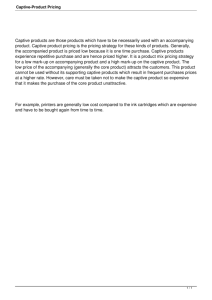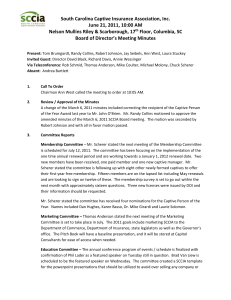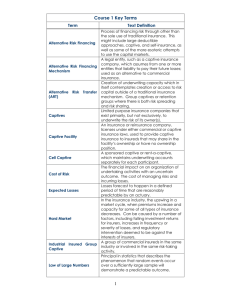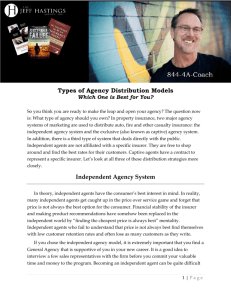What is an insurance captive
advertisement
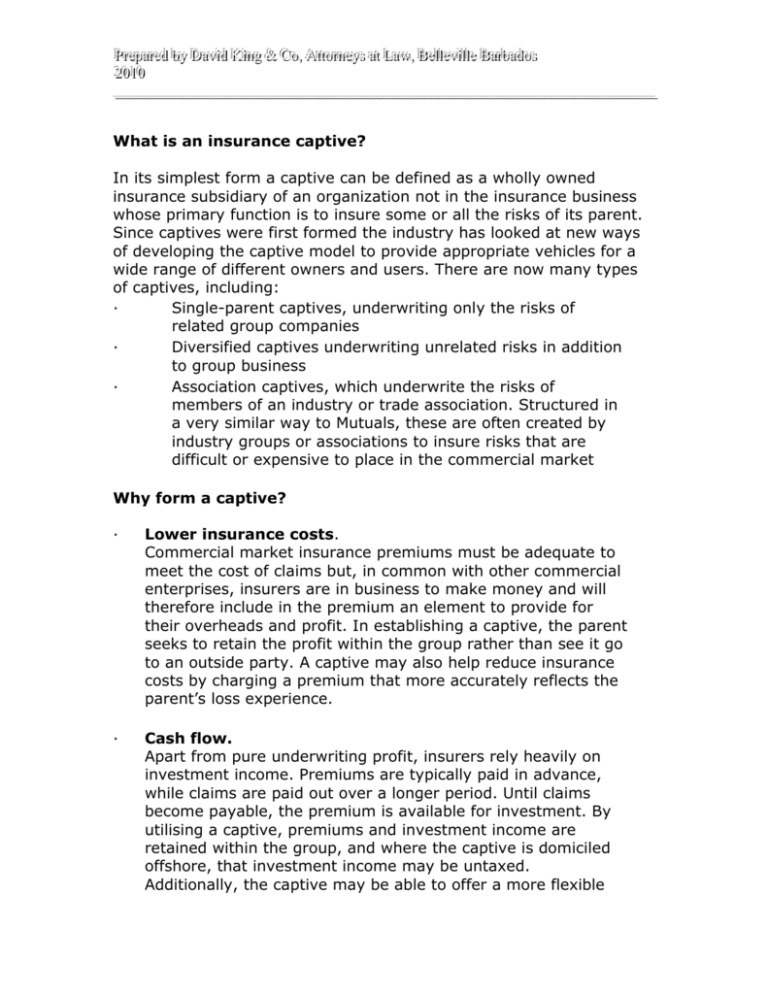
PPrreeppaarreedd bbyy D Daavviidd K Kiinngg & &C Coo,, A Attttoorrnneeyyss aatt LLaaw w,, B Beelllleevviillllee B Baarrbbaaddooss 22001100 ________________________________________________________________________________________________________________________________________________ What is an insurance captive? In its simplest form a captive can be defined as a wholly owned insurance subsidiary of an organization not in the insurance business whose primary function is to insure some or all the risks of its parent. Since captives were first formed the industry has looked at new ways of developing the captive model to provide appropriate vehicles for a wide range of different owners and users. There are now many types of captives, including: · Single-parent captives, underwriting only the risks of related group companies · Diversified captives underwriting unrelated risks in addition to group business · Association captives, which underwrite the risks of members of an industry or trade association. Structured in a very similar way to Mutuals, these are often created by industry groups or associations to insure risks that are difficult or expensive to place in the commercial market Why form a captive? · Lower insurance costs. Commercial market insurance premiums must be adequate to meet the cost of claims but, in common with other commercial enterprises, insurers are in business to make money and will therefore include in the premium an element to provide for their overheads and profit. In establishing a captive, the parent seeks to retain the profit within the group rather than see it go to an outside party. A captive may also help reduce insurance costs by charging a premium that more accurately reflects the parent’s loss experience. · Cash flow. Apart from pure underwriting profit, insurers rely heavily on investment income. Premiums are typically paid in advance, while claims are paid out over a longer period. Until claims become payable, the premium is available for investment. By utilising a captive, premiums and investment income are retained within the group, and where the captive is domiciled offshore, that investment income may be untaxed. Additionally, the captive may be able to offer a more flexible PPrreeppaarreedd bbyy D Daavviidd K Kiinngg & &C Coo,, A Attttoorrnneeyyss aatt LLaaw w,, B Beelllleevviillllee B Baarrbbaaddooss 22001100 ________________________________________________________________________________________________________________________________________________ · premium payment plan thereby offering a direct cash flow advantage to the parent. Risk retention A company’s willingness to retain more of its own risk, particularly by increasing deductible levels, may be frustrated by the inadequate discount offered by insurers to take account of the increased deductible and by the fact that the company is unable to establish reserves to pay future claims. Establishment of a captive can help address both these problems. · Unavailability of coverage Where the commercial market is unable or unwilling to provide coverage for certain risks or where the price quoted is seen to be unreasonable, a captive may provide the cover required. · Risk Management. A captive can act as a focus for the risk management and risk financing activities of its parent organisation. An effective risk management programme will result in recognisable profits for the captive. A captive can also be used by a multinational to set global deductible levels by enabling a local manager to insure with the captive at a level suitable to the size of his own business unit, while the captive only buys reinsurance in excess of the level appropriate to the group as a whole.

